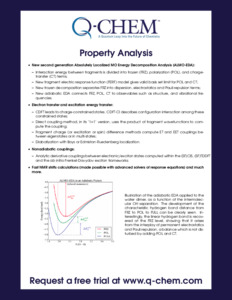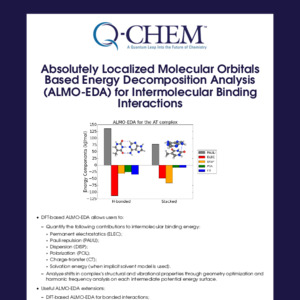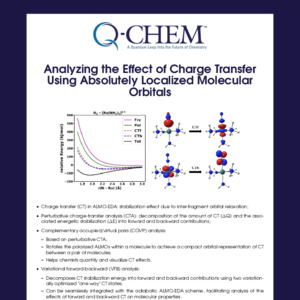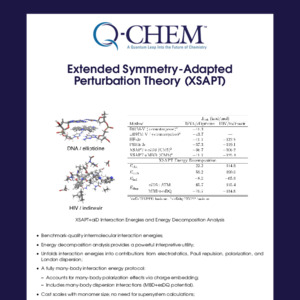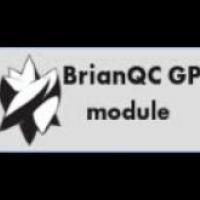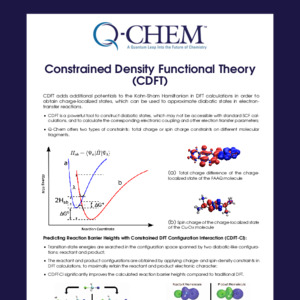Property Analysis
-
New second generation Absolutely Localized MO Energy Decomposition Analysis (ALMO-EDA):
-
Interaction energy between fragments is divided into frozen (FRZ), polarization (POL), and charge-transfer (CT) terms;
-
New fragment electric response function (FERF) model gives valid basis set limit for POL and CT;
-
New frozen decomposition separates FRZ into dispersion, electrostatics and Pauli repulsion terms;
-
New adiabatic EDA connects FRZ, POL, CT to observables such as structure, and vibrational frequencies.
-
-
Electron transfer and excitation energy transfer:
-
CDFT leads to charge-constrained states. CDFT-CI describes configuration interaction among these constrained states;
-
Direct coupling method, in its ’1+1’ version, uses the product of fragment wavefunctions to compute the coupling;
-
Fragment charge (or excitation or spin) difference methods compute ET and EET couplings between eigenstates or in multi-states;
-
Diabatization with Boys or Edmiston-Ruedenberg localization.
-
-
Nonadiabatic couplings:
- Analytic derivative couplings between electronic/exciton states computed within the (SF)CIS, (SF)TDDFT and the ab initio Frenkel-Davydov exciton frameworks;
-
Fast NMR shifts calculations (made possible with advanced solvers of response equations) and much more.
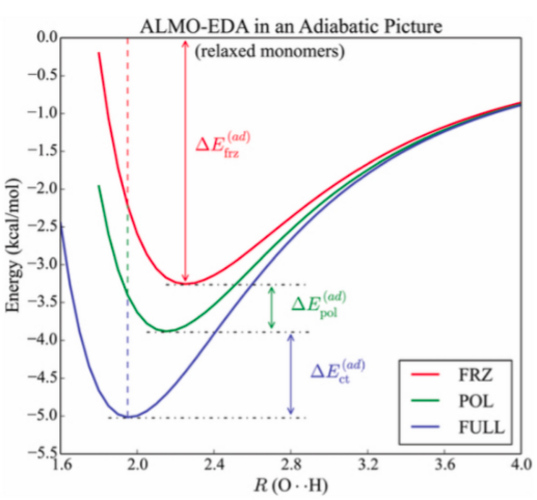
Illustration of the adiabatic EDA applied to the water dimer, as a function of the intermolecular OH separation. The development of the characteristic hydrogen bond distance from FRZ to POL to FULL can be clearly seen. Interestingly, the linear hydrogen bond is recovered at the FRZ level, showing that it arises from the interplay of permanent electrostatics and Pauli repulsion, a balance which is not disturbed by adding POL and CT.
Want to try Q-Chem?
